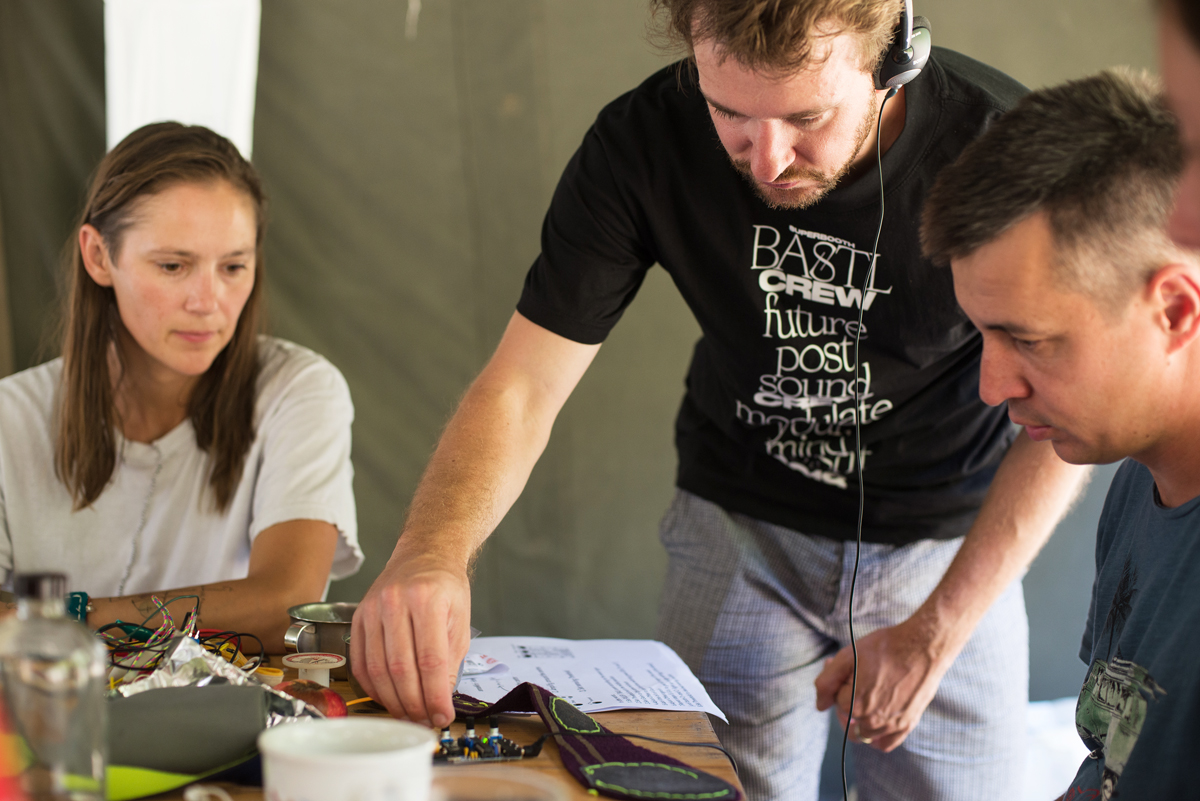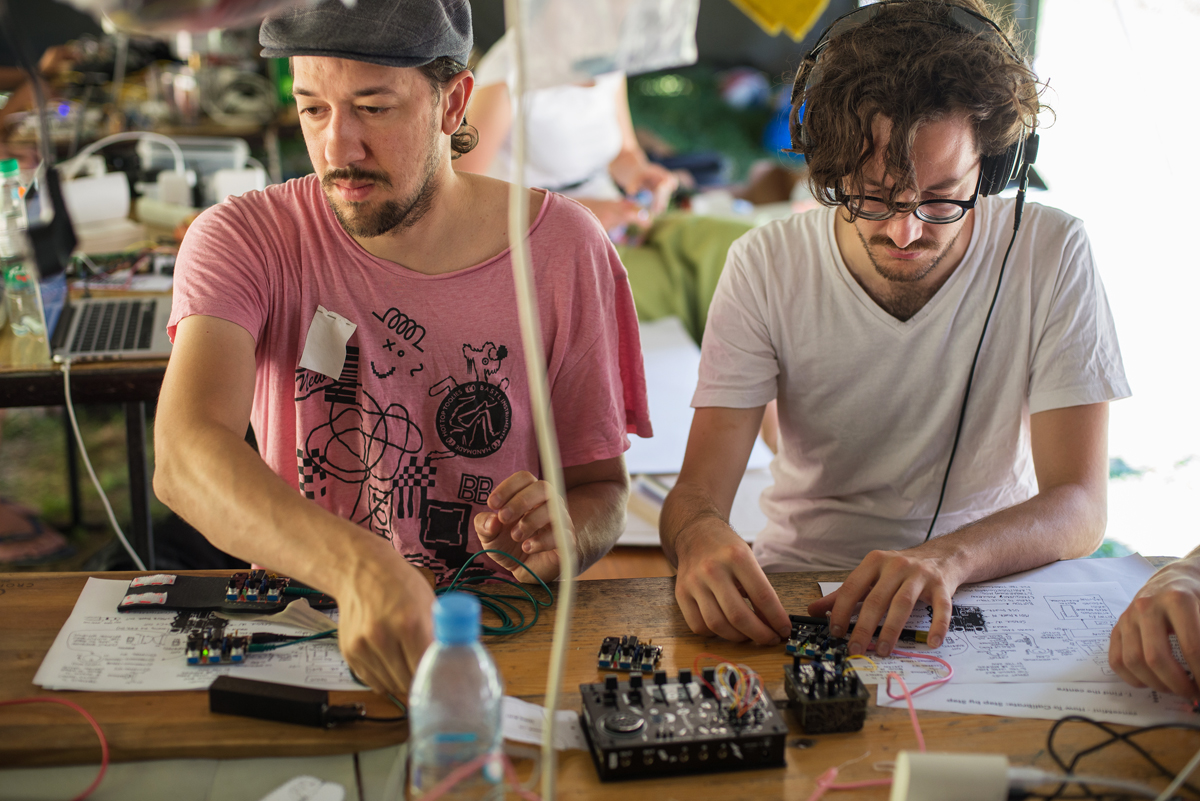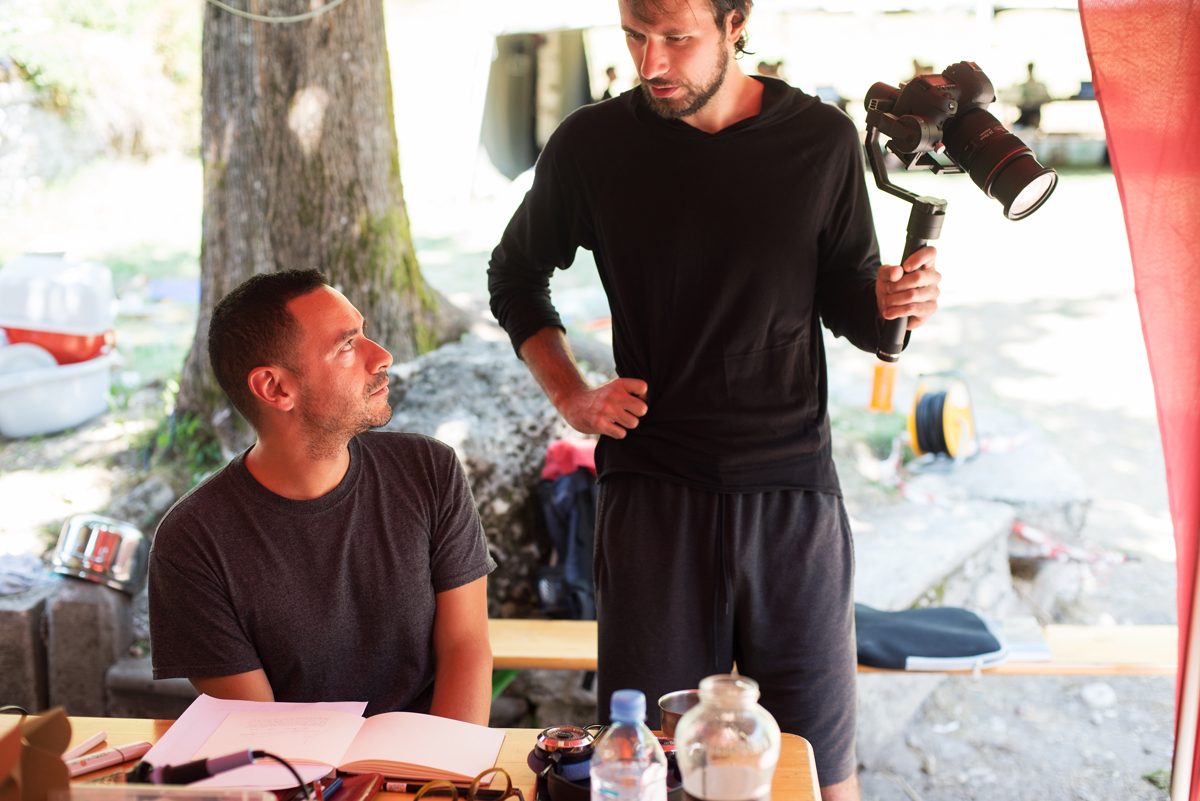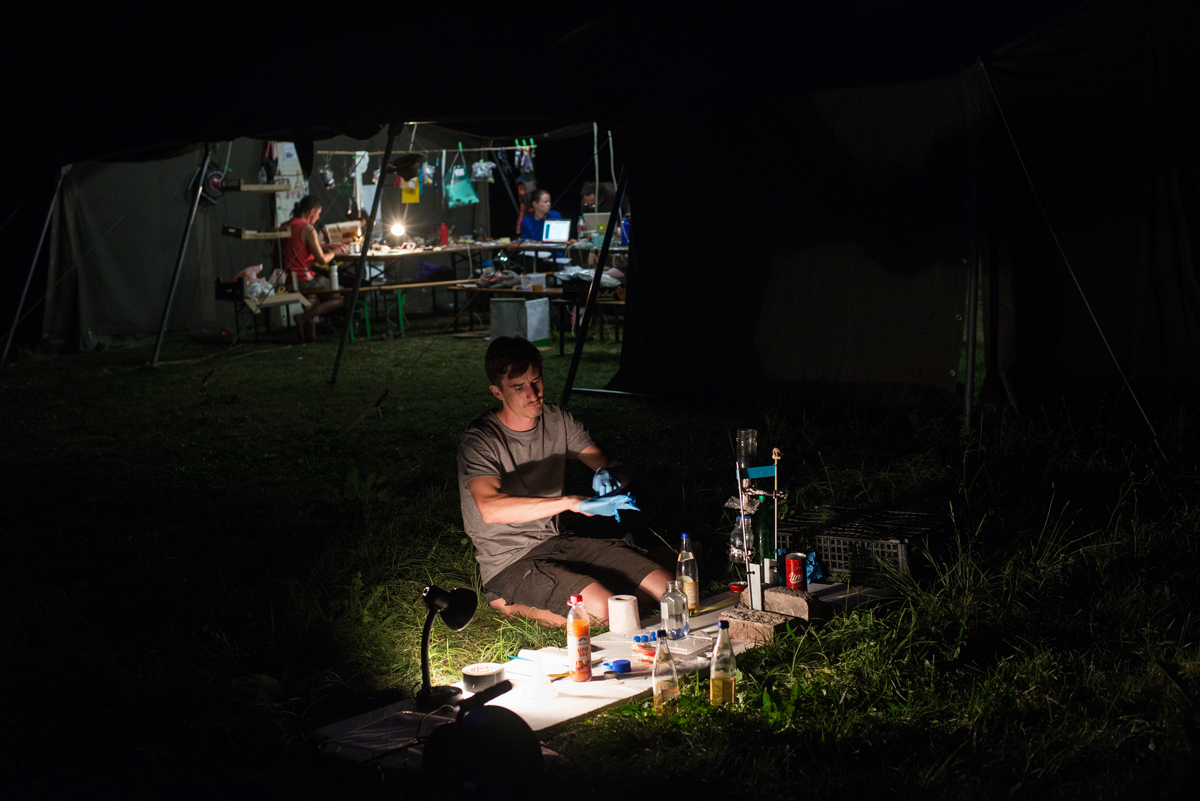The envisioned and realizable PIFprojects are about to be completed. Another contribution to the long list is the Library of Missing Parts and Inclusive Circuits, a humorous database of missing graphic representations, which illustrate our relationship to technology. The sensor building workshop led by Hannah and Vaclav is going along nicely. We managed to build several sensors from textiles, which will sonify our work through modular synthesis.
Klemens Kohlweis is another artist who made it possible to listen to our immediate surroundings. He used several parabolic microphones to isolate and amplify selected sounds at great distances. The sound of wind takes center stage in Juan Duarte’s project Aeolian Artefact. Januš Aleš Luznar (Yanoosh, Ohm Fat) is also fast approaching the rhythm of his heart with the help of two stethoscope-looking microphones he built at the camp.
Two participants, both working at the intersection of sound and visual art are Connor Haynes, an audiovisual artist from UK and Juan Manuel Escalante, best described as a nomad. Both were making field recordings in places around PIFcamp, manipulating them and producing accompanying visuals. Escalante envisioned a graphic album and created a series of refined artwork, which reveals various locations where he made the recordings. He considers releasing the project in a fanzine form.
The Slovenian visual artist Tisa Neža Herlec focused on the sonification of her drawing table, which she managed to accomplish with a few contact microphones. Music and sound also drive the Sonance Garden interactive installation by Ina Thomann, an Austrian artist working under the artist name Lino Leum. She will be able to manipulate the sound in the installation by changing the degree of light, moisture and temperature.
We are also trying to grasp the concept of time. For Anna Sircova, a psychologist working and living in Denmark, time has been the subject of intense research. An enticing glimpse of the future is provided by Jakob Scheite and his Fortune Telling Machine. A sample of a donor’s urine is used to measure concentrations of the donor’s hormones and these measurements collectively are used to predict an individual’s future.




